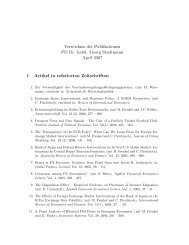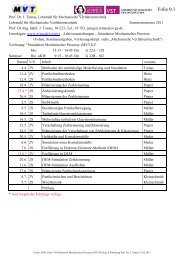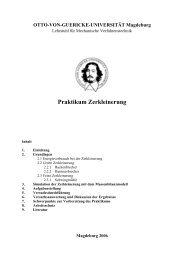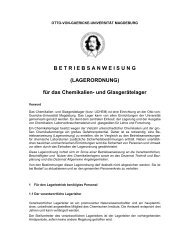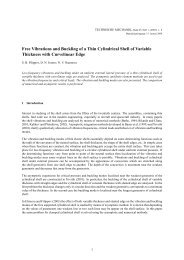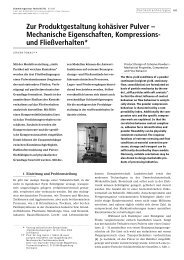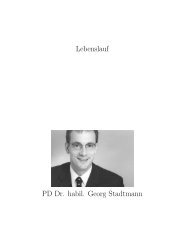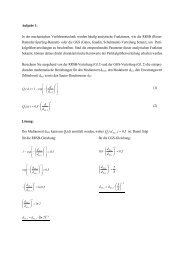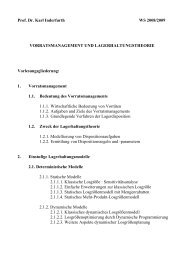Mechanics of nanoparticle adhesion â A continuum approach
Mechanics of nanoparticle adhesion â A continuum approach
Mechanics of nanoparticle adhesion â A continuum approach
Create successful ePaper yourself
Turn your PDF publications into a flip-book with our unique Google optimized e-Paper software.
30J. TomasFigure 7. Constitutive models <strong>of</strong> contact deformation <strong>of</strong> smooth spherical particles in normal directionwithout (only compression +) and with <strong>adhesion</strong> (tension –). The basic models for elastic behaviorwere derived by Hertz [41], for constant <strong>adhesion</strong> by Yang [61], for constant <strong>adhesion</strong> byJohnson et al. [51], for plastic behavior by Thornton and Ning [60] and Walton and Braun [59], andfor plasticity with variation in <strong>adhesion</strong> by Molerus [13] and Schubert et al. [57]. This has been expandedstepwise to include nonlinear plastic contact hardening and s<strong>of</strong>tening equivalent to shearthickeningand shear-thinning in suspension rheology [91]. Energy dissipation was considered bySadd et al. [55] and time-dependent viscoplasticity by Rumpf et al. [62]. Considering all these theories,one obtains a general contact model for time- and rate-dependent viscoelastic, plastic, viscoplastic,<strong>adhesion</strong> and dissipative behaviors [91, 146–148, 151].



